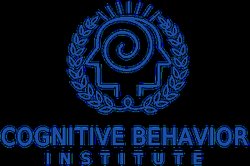 When the weather becomes cold and the sun goes down early, many people find themselves in a low mood, affected by the so-called 'winter blues.' But when this winter depression becomes a pattern year after year and affects your daily life, it may be something more than just a bad day. That’s when you should seek professional help for your mental health.
When the weather becomes cold and the sun goes down early, many people find themselves in a low mood, affected by the so-called 'winter blues.' But when this winter depression becomes a pattern year after year and affects your daily life, it may be something more than just a bad day. That’s when you should seek professional help for your mental health.
That's because you may be struggling with a condition called seasonal affective disorder (SAD). Seasonal affective disorder is fairly common, and typically begins and ends at a certain time of the year. It is sometimes referred to as 'winter depression,' because it tends to affect people more during the winter.
At Cognitive Behavior Institute, we believe it's important to treat SAD with the same seriousness you would treat any form of depression. By utilizing evidence-based techniques rooted in cognitive behavioral therapy, our team can help you address your seasonal mental health struggles and improve your quality of life.
Here is some important information on seasonal affective disorder, as well as some ways you can begin to cope positively with the condition:
What is Seasonal Affective Disorder?
Seasonal depression, or seasonal affective disorder (SAD), is a form of depression that occurs during certain times of the year, typically in winter months. It’s caused by changes in our circadian rhythm — the 24-hour cycle that tells our bodies when to sleep and wake. When the days become shorter, the decreased light during winter can disrupt this cycle, altering the brain chemical that signals your body's internal clock. This affects mood and can cause depressive episodes that show a seasonal pattern year after year.
Common SAD Symptoms
Because SAD is a type of depression, SAD symptoms often align with other typical depressive symptoms. The difference is that these mood changes occur at about the same times each year in alignment with the changing of the seasons.
Some of the most common symptoms of SAD include:
- Feeling sad, anxious, or 'empty'
- Trouble sleeping
- Social withdrawal
- Lack of energy
- Decreased concentration or difficulty making decisions
- Carbohydrate cravings and cravings for sweet and starchy foods
- Weight gain
Know Your Risk Factors
Like other mental disorders, winter SAD affects different people in different ways. For example, people living further away from the equator may be at a higher risk for SAD due to decreased sun exposure. Other risk factors can include:
- Gender: Women are 4 times more likely than men to experience seasonal affective disorder
- Age: Young adults and teenagers are particularly vulnerable to SAD
- Family history: If a family member has SAD than you may be at higher risk
- Existing mental health issues: Having an existing mental health condition like major depression, bipolar disorder, or another mood disorder can increase your chances of developing SAD.
Coping with Seasonal Affective Disorder
Although struggling with any form of depression can feel hopeless, there are plenty of options for coping, managing, and ultimately treating SAD.
Bright Light Therapy
Light therapy involves a special light therapy box that emits a very bright light. This mimics natural outdoor light, helping to regulate your circadian rhythm. Light box therapy can be highly effective in treating SAD, and they're easily accessible and affordable. If you're considering light therapy, your doctor can help you decide if a light box is right for you and how to use it properly.
Cognitive Behavioral Therapy
Cognitive behavioral therapy (CBT) is an evidence-based form of talk therapy that focuses on identifying and changing negative thoughts and behavior patterns that contribute to your seasonal depression, as well as developing coping strategies for managing difficult feelings. CBT with a mental health professional can be an effective way to manage SAD.
Vitamin D Supplements
Low vitamin D levels are linked to SAD, so taking a supplement can help offset some of the symptoms. Along with this, eating foods that contain lots of vitamin D — such as oily fish, egg yolks and fortified dairy products — could help improve your mood during winter months.
Medication
In some cases, your doctor may recommend antidepressant medications, such as SSRIs (selective serotonin reuptake inhibitors) to help manage your symptoms. If your mental health counselor feels that treatment for a separate disorder may help with your symptoms of SAD, they may suggest additional medications. Your doctor can work with you to determine the best type and dosage of medication for you.
Evidence-Based SAD Treatment in Pittsburgh
It’s important to remember that you are not alone in your struggle with seasonal depression. Don’t be afraid to reach out for help if you’re feeling overwhelmed or unable to cope. Ask a friend, family member, or trusted counselor for support, and don't hesitate to begin receiving treatment from a mental health professional.
At Cognitive Behavior Institute, we have experience using evidence-based CBT techniques to treat a wide range of mental health conditions, including seasonal affective disorder. When you consult with us, we'll help you choose the most suitable treatment programme for your needs.
To learn more about our program, contact us here. If you'd like to see more articles on coping with depression from our team, check out our other blogs!

